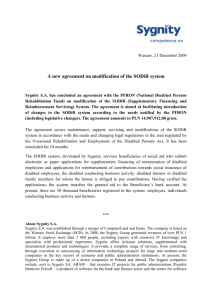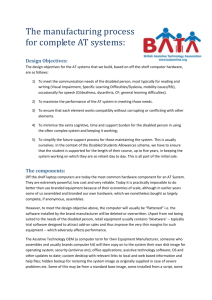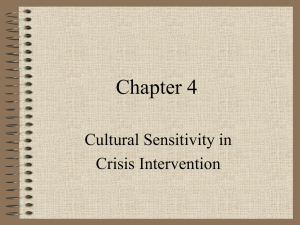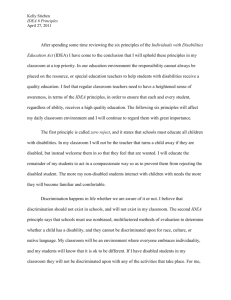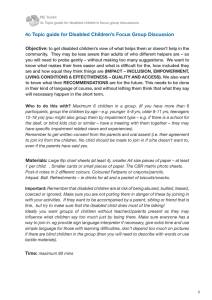Protocol for Conducting Disability Surveys (Click Here)
advertisement
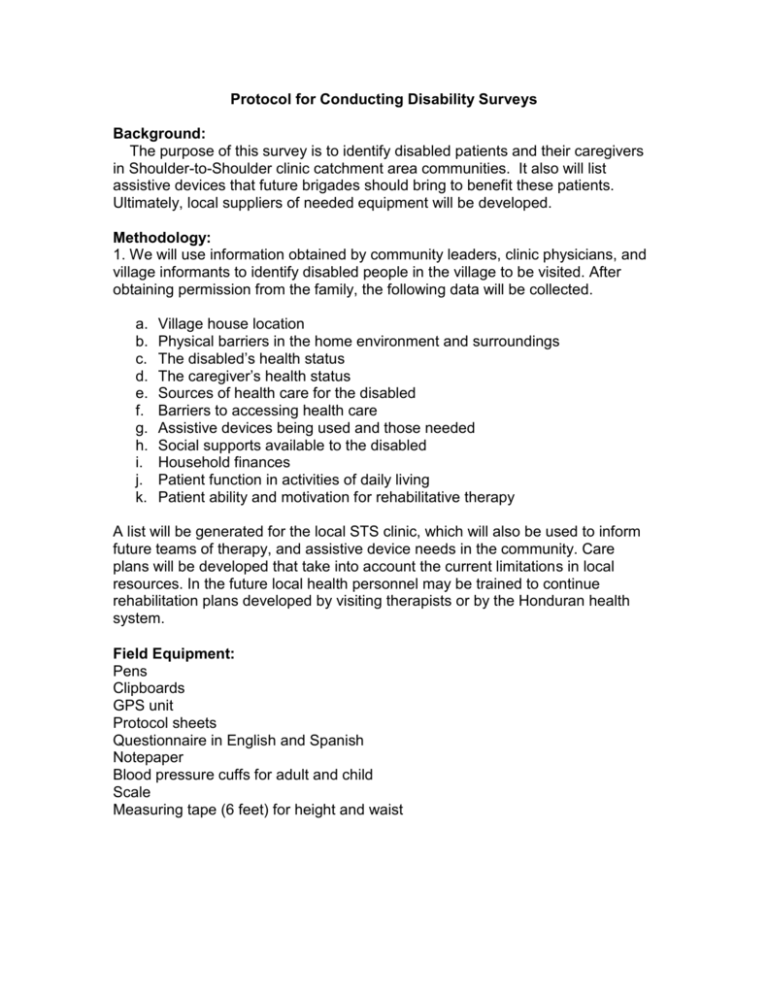
Protocol for Conducting Disability Surveys Background: The purpose of this survey is to identify disabled patients and their caregivers in Shoulder-to-Shoulder clinic catchment area communities. It also will list assistive devices that future brigades should bring to benefit these patients. Ultimately, local suppliers of needed equipment will be developed. Methodology: 1. We will use information obtained by community leaders, clinic physicians, and village informants to identify disabled people in the village to be visited. After obtaining permission from the family, the following data will be collected. a. b. c. d. e. f. g. h. i. j. k. Village house location Physical barriers in the home environment and surroundings The disabled’s health status The caregiver’s health status Sources of health care for the disabled Barriers to accessing health care Assistive devices being used and those needed Social supports available to the disabled Household finances Patient function in activities of daily living Patient ability and motivation for rehabilitative therapy A list will be generated for the local STS clinic, which will also be used to inform future teams of therapy, and assistive device needs in the community. Care plans will be developed that take into account the current limitations in local resources. In the future local health personnel may be trained to continue rehabilitation plans developed by visiting therapists or by the Honduran health system. Field Equipment: Pens Clipboards GPS unit Protocol sheets Questionnaire in English and Spanish Notepaper Blood pressure cuffs for adult and child Scale Measuring tape (6 feet) for height and waist Questionnaire Topics Census Village GPS address Disabled’s family Names First Name DOB Sex Marital Status Primary caregiver Secondary caregiver Household relationships Literacy of disabled School grade completed Literacy of caregiver Caregiver health Disabled’s Health Height Weight Blood Pressure Health self assessment Disabling illness Other illnesses Medications Health care: Primary source Last visit Secondary source Last visit Tertiary source Last visit Physical Environment of Home & Surroundings 100 meter topography Yard topography Steps or other entrance challenges Floor of home Furniture adaptation Access to latrines Electricity (appliances) Telephone Transportation availability Barriers to accessing care Condition of paths Condition of roadways Assistive Device Use and Needs Cane or walking stick Crutches Walker Brace Wheelchair Other Social Supports: Education of household head Occupation of household head Social networks participation Family support local Family support remote



